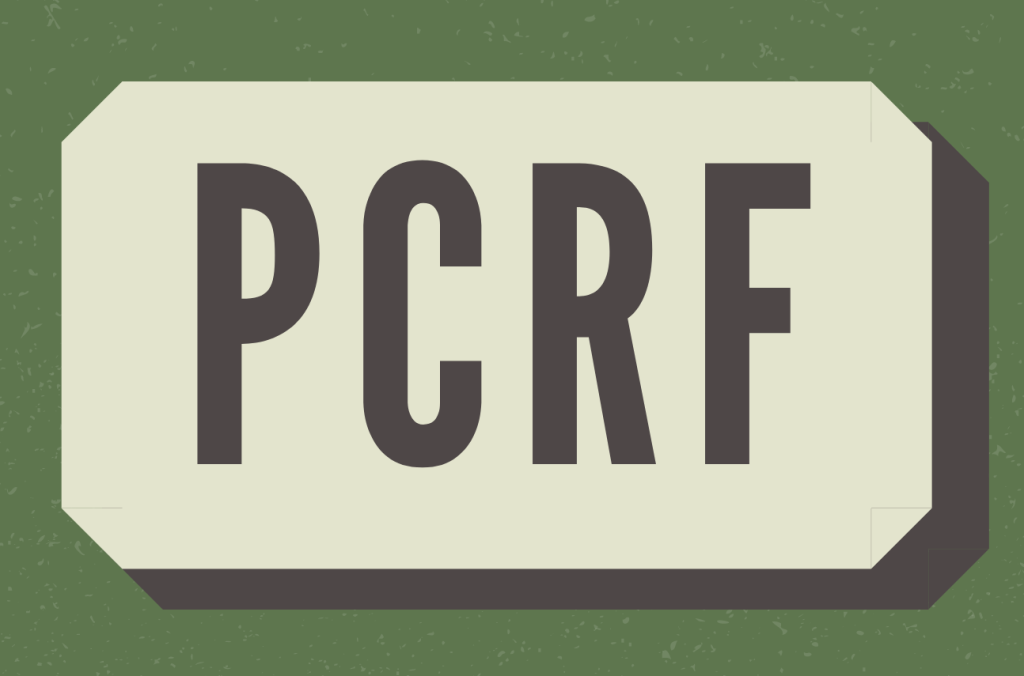What Is PCRF On Electric Bill? Unveiling The Mystery And Saving On Your Energy Costs!
What is PCRf on Electric Bill?
Greetings, Smart Readers! Today, we will delve into the intriguing world of PCRf on electric bills. This topic has gained significant attention lately, and it’s essential to understand its implications for both residential and commercial consumers. In this article, we will explore what PCRf is, its significance, and how it affects your electric bill. So, let’s dive right in!
Introduction
1. PCRf, short for Power Cost Recovery Factor, is a term used to describe the additional charges appearing on your electric bill. These charges aim to recover the costs associated with generating and delivering electricity to consumers.
1 Picture Gallery: What Is PCRF On Electric Bill? Unveiling The Mystery And Saving On Your Energy Costs!
2. The PCRf is calculated based on several factors, including the cost of fuel, maintenance, transmission, and distribution expenses incurred by the electric utility company. It helps ensure that the company covers its expenses and maintains a reliable power supply.
3. Understanding PCRf is crucial as it allows consumers to comprehend the various components of their electric bill and make informed decisions regarding their energy consumption.
Image Source: fbsbx.com
4. In the following sections, we will explore the what, who, when, where, why, and how of PCRf on electric bills, shedding light on its purpose and impact.
What is PCRf?
PCRf refers to the Power Cost Recovery Factor, which is an additional charge included in your electric bill. This factor accounts for the costs incurred by the utility company in generating and delivering electricity to customers. The PCRf aims to ensure that the company recovers its expenses and maintains a stable power supply.
Explanation:

Image Source: spec.coop
PCRf is a cost recovery mechanism utilized by electric utility companies to cover their operational expenses. These expenses include the acquisition of fuel, maintenance of power plants and infrastructure, transmission and distribution costs, and other expenses required to provide electricity to consumers.
Significance:
The inclusion of PCRf in electric bills allows utility companies to recover their costs efficiently. Without PCRf, the burden of these expenses would fall entirely on the company, leading to potential financial instability. Additionally, PCRf ensures the continuous availability of electricity by supporting the maintenance and improvement of power infrastructure.
Impact on Electric Bill:
PCRf contributes to the overall cost of electricity consumed by consumers. The exact amount varies depending on factors such as fuel prices, maintenance expenses, and other operational costs. It is essential for consumers to understand PCRf to gauge the different components of their electric bill and make informed decisions about their energy consumption.
Who Determines PCRf?
The determination of PCRf varies based on the region and regulatory framework governing the electric utility industry. In most cases, regulatory bodies such as public service commissions or energy commissions have the authority to approve or set the PCRf rate.
Explanation:
The responsibility for determining PCRf lies with the regulatory bodies overseeing the electric utility industry. These bodies assess various factors, including the costs incurred by the utility company, to determine a fair PCRf rate. Public service commissions or energy commissions typically have the authority to approve or set the PCRf rate within a specific region.
Role of Utility Companies:
Utility companies play an essential role in providing the necessary information and justifications to regulatory bodies when proposing a PCRf rate. They must present comprehensive data on their expenses, including fuel costs, maintenance expenses, transmission, and distribution costs, for the regulatory bodies to assess and determine a reasonable PCRf rate.
When is PCRf Charged?
PCRf is charged periodically and is typically reflected on your monthly or bi-monthly electric bill. The frequency and duration may vary based on the regulatory framework and the policies implemented by the utility company.
Explanation:
The timing of PCRf charges depends on the policies and guidelines set by the regulatory bodies and the utility company. In most cases, the charges are included in the monthly or bi-monthly electric bills. The frequency and duration of PCRf charges may differ between regions and utility companies.
Purpose of Periodic Charges:
Charging PCRf periodically allows utility companies to recover their expenses over time, rather than burdening consumers with a lump-sum payment. It also ensures that the costs associated with generating and delivering electricity are distributed fairly among consumers based on their energy consumption.
Where is PCRf Applicable?
PCRf is applicable in regions where the electric utility industry operates under a regulated framework. The specific areas may vary depending on the jurisdiction and the regulatory policies governing the industry.
Explanation:
PCRf is applicable in regions where the electric utility industry operates under regulatory oversight. These regions have established frameworks to ensure the fair and efficient provision of electricity to consumers. The specific areas where PCRf is applicable depend on the jurisdiction and the regulatory policies implemented within each region.
Regulatory Jurisdiction:
Regulatory jurisdiction refers to the authority of regulatory bodies, such as public service commissions or energy commissions, to regulate and oversee the operations of electric utility companies. The regulatory framework ensures that utility companies adhere to specific guidelines and standards, including the inclusion of PCRf charges in electric bills.
Why is PCRf Included in Electric Bills?
PCRf is included in electric bills to enable utility companies to recover their costs and maintain a stable power supply. It ensures that consumers share the financial responsibility for these expenses based on their energy consumption, promoting fairness and sustainability in the electric utility industry.
Explanation:
PCRf is included in electric bills to distribute the costs associated with generating and delivering electricity equitably among consumers. By charging PCRf, utility companies can recover their expenses, including fuel costs, infrastructure maintenance, and other operational expenses. It also supports the ongoing maintenance and improvement of power infrastructure, ensuring a reliable power supply.
Fairness in Cost Allocation:
Including PCRf in electric bills promotes fairness by ensuring that consumers contribute to the costs incurred by utility companies based on their energy consumption. This approach prevents a small subset of consumers from shouldering the entire financial burden and allows for the continued provision of reliable electricity to all.
How Does PCRf Impact Consumers?
PCRf impacts consumers by contributing to the overall cost of electricity and influencing their monthly or bi-monthly electric bills. Understanding PCRf allows consumers to make informed decisions about their energy consumption and manage their expenses effectively.
Explanation:
PCRf impacts consumers financially, as it adds to the cost of electricity reflected in their electric bills. The exact amount of PCRf charges varies depending on factors such as fuel prices, maintenance expenses, and operational costs incurred by utility companies. By understanding PCRf, consumers can gain insight into the different components of their electric bills and identify potential strategies to manage their energy consumption and reduce costs.
Energy Conservation:
PCRf serves as an incentive for consumers to conserve energy and reduce their electricity consumption. By doing so, consumers can not only lower their monthly bills but also contribute to the overall sustainability and environmental conservation efforts.
Financial Planning:
Understanding the impact of PCRf on electric bills enables consumers to plan their finances better. By evaluating their energy consumption patterns and considering the PCRf charges, consumers can adjust their budgets and allocate resources effectively.
Consumer Advocacy:
Knowledge of PCRf empowers consumers to engage in discussions and advocate for fair and transparent billing practices within the electric utility industry. By actively participating in dialogues and staying informed, consumers can voice their concerns and contribute to positive changes that benefit all stakeholders.
Advantages and Disadvantages of PCRf on Electric Bills
PCRf on electric bills comes with both advantages and disadvantages. Let’s explore them in detail:
Advantages:
1. Cost Recovery: PCRf allows utility companies to recover their operational expenses efficiently, ensuring their financial stability and the continued provision of reliable electricity.
2. Equitable Cost Distribution: By including PCRf in electric bills, the costs associated with generating and delivering electricity are distributed among consumers based on their energy consumption, promoting fairness.
3. Encourages Energy Conservation: PCRf serves as an incentive for consumers to conserve energy, leading to reduced electricity consumption and environmental conservation.
Disadvantages:
1. Additional Financial Burden: PCRf adds to the overall cost of electricity, potentially increasing the financial burden on consumers.
2. Lack of Transparency: Some consumers may find it challenging to understand the breakdown of PCRf charges and how they contribute to the overall electric bill.
3. Dependence on Regulatory Oversight: The effectiveness of PCRf relies on the regulatory bodies overseeing the electric utility industry, and any shortcomings in the regulatory framework can impact its fairness and efficiency.
Frequently Asked Questions (FAQs)
1. Is PCRf the same as taxes on my electric bill?
No, PCRf is different from taxes. PCRf is a charge included in your electric bill to recover the costs incurred by the utility company in generating and delivering electricity, while taxes are levies imposed by the government on different goods and services.
2. Can I opt-out of paying PCRf charges?
No, PCRf charges are mandatory and cannot be opted out of. They form an essential part of your electric bill and contribute to the recovery of costs incurred by the utility company.
3. Does PCRf fluctuate over time?
Yes, PCRf can fluctuate based on several factors, including fuel prices, maintenance expenses, and regulatory decisions. It is advisable to stay updated with the changes in PCRf rates to understand the impact on your electric bill.
4. Are PCRf charges the same for residential and commercial consumers?
No, PCRf charges may differ for residential and commercial consumers. The variation may be due to differences in energy consumption patterns, infrastructure requirements, and other factors specific to each consumer group.
5. How can I minimize the impact of PCRf on my electric bill?
You can minimize the impact of PCRf on your electric bill by adopting energy-efficient practices, such as using energy-saving appliances, optimizing your energy consumption, and exploring renewable energy options. These actions can help reduce your overall electricity consumption and, in turn, lower the PCRf charges reflected in your bill.
Conclusion
In conclusion, PCRf on electric bills represents the additional charges utility companies include to recover their operational expenses. By understanding PCRf, consumers can gain insight into the different components of their electric bills and make informed decisions about their energy consumption. While PCRf comes with advantages and disadvantages, it plays a crucial role in maintaining a stable power supply and promoting fairness in cost distribution. By actively engaging in conversations about PCRf and staying informed, consumers can contribute to positive changes within the electric utility industry and advocate for their interests.
Final Remarks
Thank you, Smart Readers, for joining us on this informative journey exploring what PCRf on electric bills entails. We hope this article has provided you with valuable insights and empowered you to understand the complexities of your electric bill. It is important to note that the information provided here is based on general knowledge and may vary based on regional and regulatory differences. For specific details and clarifications regarding PCRf charges, we recommend reaching out to your electric utility company or local regulatory bodies. Stay informed, be energy-conscious, and continue making smart decisions for a sustainable future.
This post topic: Electric



